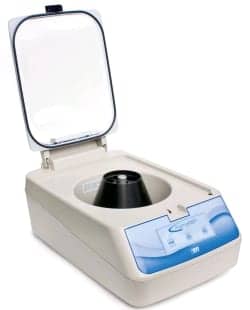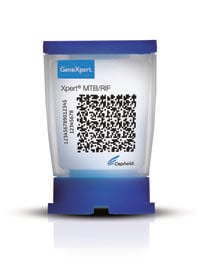
Beckman Coulter partnered with Instrumentation Laboratory for the hemostasis analyzer, ACL TOP 500 CTS (closed tube sampling) to be used in mid- to high-volume labs with more than 800 samples tested/day and 240 test results/hour.
The monitoring of clotting factors and coagulation of blood in perioperative patients has been an important factor in diagnosing potential causes of hemorrhage, in order to guide therapies and reduce the probability of bleeding during surgery. Routine laboratory-based coagulation tests (eg, prothrombin time/International Normalized Ratio (PT/INR), activated partial thromboplastin time, fibrinogen) and platelet count are being used to assess the patient’s current coagulation status. However, in an emergency hospital situation, these standard tests and testing instruments have limitations due to the time duration between drawing the sample and result (around 1 hour), and the temperature of analysis (the patient’s body temperature is 37°C). This article features the companies working toward better analyzers for coagulation, the new standards that are improving point of care (POC) analysis leading to better medical care.
COAGULATION TESTS
The typical tests used in coagulation or clot-formation analysis are activated partial prothrombin time (APTT), thrombin time, fibrinogen, and prothrombin time (PT). The process of hemostasis or clot formation is a complex cascade of reactions. When blood vessels are damaged, in order to stop bleeding, first comes a reflex reaction of vessels constricting (primary hemostasis), then release of cytoplasmic granules containing vasoconstrictors (serotonin, ADP, Thromboxane A2), followed by platelet aggregation, and secondary hemostasis. A blood clot forms via a cascade mechanism, where Factor III activates Factor VII (with Ca (II)), and Factor XII from active platelets activates Factor XI. Then Factor X is activated, which activates Prothrombin activator. This is followed by thrombin formation, which converts fibrinogen to fibrin, which in the presence of Factor XIII forms covalent crosslinks to form a blood clot.
A quick and standard test is the PT/INR test, in which a traditional prothrombin test shows activation when the sample is mixed with thromboplastin. When fibrinogen is converted to fibrin, clots (extensive and local) are detected, and these results are reported as seconds and as International Normalized Ratio (INR). The INR is then recommended during oral anticoagulant therapy monitoring. The INR is determined as the ratio of patient prothrombin time(s) to the mean of the normal prothrombin time, taken to the exponential of the ISI. The formula is INR=(Patient PT (s)/mean normal prothrombin time(s))ISI. In addition, besides coagulation-based diseases, detection of clots postsurgery, using CT scans, D-dimer tests, and ultrasounds are also other ways to analyze coagulation in a different area of clot formation within the human body (as a side effect of surgery or organ-transplant procedures).
COAGULATION ANALYSIS PRODUCTS

Thermo Fisher’s PlasmaPrep Centrifuge used for plasma/serum separation prior to testing a sample on a blood analyzer.
Roche Diagnostics, Indianapolis, has long been part of the coagulation analysis field. Since 1994, Roche’s POC for PT/INR systems have enabled health care professionals to allow closer patient monitoring and care management, especially in the case of warfarin (Coumadin®) therapy. The current new products focus on allowing health care professionals to receive test results in real time in PT/INR.
In November 2010, Roche released CoaguChek® Link, a Web-based application for CoaguChek Patient Services for patients who self-test their PT/INR. “CoaguChek Link allows health care professionals to receive patient results in real time, receive automatic alerts for out-of-range results, and manage their patients’ therapy when convenient,” says Jill Downey, marketing manager, product marketing, Roche Diagnostics Corp. In July 2010, Roche introduced the CoaguChek XS Pro system. The meter includes integrated bar code reader functionality to help ensure patient safety and simplify regulatory compliance, making it easier to manage an anticoagulation clinic. The CoaguChekXS family of monitors includes the CoaguChek XS (available for patient self-testing) and CoaguChek XS Plus systems.
Another strong presence in the field is Beckman Coulter Inc, Brea, Calif. “In January 2010, Beckman Coulter commercialized HemosIL® Liquid Heparin, a heparin assay that dramatically improves laboratory monitoring of heparin therapy,” says Venita C. Shirley, market manager, hemostasis, Beckman Coulter, Clinical Diagnostics Division, who has introduced several of the company’s new products in the field. Before this, the type of heparin, low MW or unfractionated heparin, had to be known by the lab to run the standard calibration curve when running the patient sample. This product simplifies heparin monitoring by using a universal heparin calibration curve. It is liquid, ready-to-use, with onboard stability of 7 days on the instrument.
In May 2010, the company launched HemosIL INR Validate and HemosIL ISI Calibrate plasma sets for use with designated HemosIL PT reagents on IL Coagulation Systems in conjunction with the ISIweb software. As per CLSI guidelines, the INR Validate plasma set is used to validate the lab’s INR testing system. To complete the online validation process, ISIweb Software performs the calculations and provides documentation of validation. “Beckman also provides fully integrated, real-time PCR for Factor II G20210A and Factor V (Leiden) mutations for diagnosis of individuals with suspected thrombophilia,” Shirley adds. The genotyping results are available in 30 minutes.
Beckman Coulter, partnering with Instrumentation Laboratory (IL), Bedford, Mass, released its hemostasis analyzer, ACL TOP 500 CTS (closed tube sampling) to be used in mid- to high-volume laboratories with more than 800 samples tested/day and 240 test results per hour. Its prothrombin test is delivered in about 3 minutes, while other clotting, immunoturbimetric, and chromogenic tests can also be performed in this analyzer. The company’s HemosIL D-Dimer HS test runs on the ACL TOP analyzers for use in conjunction with a clinical Pretest Probability (PTP) assessment model to exclude venous thromboembolism (VTE) in outpatients suspected for deep vein thrombosis (DVT) and pulmonary embolism (PE). Interference from rheumatoid factor, bilirubin, hemoglobin, and lipemia is minimized on the ACL TOP analyzer and results obtained in 10 minutes.
Siemens Healthcare Diagnostics, Deerfield, Ill, offers a comprehensive portfolio of performance-driven hemostasis systems. Two key instruments include the BCS® XP System and the Sysmex® CA-7000 System. The BCS XP System enables laboratories to consolidate workflow for routine and specialty hemostasis testing by allowing for a user-defined specialty menu with reflex testing, customized profiles, and the possibility of individual prioritization. Also, the BCS XP System helps to maximize high-volume routine workloads with true random-access and walk-away ability for both normal and pathological samples. The Sysmex CA-7000 System is the fastest-throughput coagulation analyzer offered by Siemens for routine testing and is designed for high-volume laboratories. It utilizes complete random-access capabilities, second-generation cap-piercing, expedited preanalysis, and the ability to process approximately 500 PT/APPT test results per hour.
Outside the United States, the company offers the Sysmex CS-2000i System, which minimizes preanalytical errors by using multiwavelength scanning and sample liquid-sensing technologies. By using preanalytical sample integrity (PSI™) technology, the analyzer provides extra operator support—it identifies and automatically manages potentially problematic test samples prior to analysis. (The Sysmex CS-2000i System is currently not available for sale in the United States.)

The meter on Roche’s CoaguChek XS Pro system includes integrated bar code reader functionality to help ensure patient safety and simplify regulatory compliance.
Recently introduced is its INNOVANCE® VWF Ac Assay and INNOVANCE PFA-200 System. The assay employs technology that allows clinical labs to use polystyrene particles (latex-based beads) rather than platelets to measure the quantitative determination of von Willebrand factor (VWF) activity—a protein that helps induce blood to clot—promoting excellent stability and accuracy. The PFA-200 System provides rapid, automated assessment for inherited, acquired, or drug-induced platelet dysfunction. Through high shear flow technology, the system provides a realistic hemodynamic environment for the measurement of primary hemostasis and reports a “closure time” in 5 to 8 minutes—helping lab professionals quickly measure platelet plug formation in a small whole blood sample (800 µL). (These are currently not available for sale in the United States.)
Diagnostica Stago (US), Parsippany, NJ, provides analyzers used in small-, midsize-, and large-volume sample runs. Using the “Diagnostica Viscosity Detection System,” the analyzers reduce interference from lipemia, icterus, or hemolysis, increasing accuracy and precision. The STA-R Evolution is a large-volume analyzer with lab automation, STA Compact® is a medium-volume benchtop analyzer, STA Compact CT is used for clotting assays only, Start® 4 is a semiautomated version for low-volume runs, while the STA Satellite® is a fully automated benchtop version capable of clotting, chromogenic, and immunologic assays.
A side-product association with coagulation detection is Thermo Fisher Scientific’s PlasmaPrep high-speed benchtop centrifuge for plasma/serum separation prior to sample testing. “By installing a PlasmaPrep centrifuge near the blood analyzer, a lab can process the samples as they arrive,” says Diane Marshall, director of marketing, Separation Technology Products, Sanford, Fla, part of Thermo Fisher Scientific. “There is no need to form batches of tubes, and PlasmaPrep provides serum or plasma separations in 3 minutes compared with traditional methods that take 10 to 15 minutes.” Key features include 2- to 10-mL blood-collection tubes, microprocessor-controlled speed, small footprint, and fast separation without high-speed risk for COAG or STAT.
NEW PRODUCTS
Roche’s Downey says the accuracy, convenience, and simplicity of POC devices in combination provide a significant advantage to the health care community by helping to enable a new paradigm in patient care. Patients are now more involved in self-testing, and, hence, tests are more focused on POC. New products focus on Independent Diagnostic Testing Facilities offering services that allow the physician and the patient to manage therapy more efficiently and effectively. In late 2011, Roche intends to enhance the Web-based CoaguChek Link clinic module, to support the in-office anticoagulation patient management, helping clinicians to document dosage therapy adjustments quickly and easily, and review patient compliance to monitor test result trends.
Siemens Healthcare Diagnostics and Universal Biosensors have signed a strategic partnership agreement to launch a new POC coagulation testing platform for the global hemostasis market. Leveraging a growing demand for near-patient testing solutions, including those that deliver time-critical coagulation data, the companies will focus on offering new technologies that deliver laboratory-quality results at the POC. The first solution scheduled for release is a PT test. Additional products with enhanced menus and extended capabilities are anticipated over time.
Shirley notes Beckman Coulter’s improved line of coagulation analyzer products. “A new HemosIL HIT-Ab(PF4-H) assay will be submitted under 510(k) for FDA review and clearance prior to US release,” she says. “Heparin-induced thrombocytopenia (HIT) is overdiagnosed because rapid testing for HIT is not readily available, [and this test is expected to change this].” It is simple to use, and accurate results are expected in 12 minutes. The ACL AcuStar is the first specialty test analyzer that offers full automation of highly sensitive immunoassays for the hemostasis lab in 25 minutes. Finally, the ACL AcuStar, considered the most sensitive method for immunoassay testing, is the first hemostasis analyzer using chemiluminescence. All testing reagents are packaged in a proprietary ready-to-use cartridge, and the initial menu is expected to be for antiphospholipid syndrome, ACA (IgG and IgM), and B2GPI (IgG and IgM).
CONCLUSION
Coagulation analyzers have come a long way from measuring the optical density of a clot in a cuvette. Now, not only do standardized tests allow hospitals to provide timely medical care, the tests are monitored in real time, are more accurate, and recorded via data warehoused in networks with easy access for physicians. This field is now moving toward integrated analyzing software, increasing the robustness of the test, and increasing the precision while reducing the analysis time.
Madhushree Ghosh, PhD, is a San Diego-based science writer.



